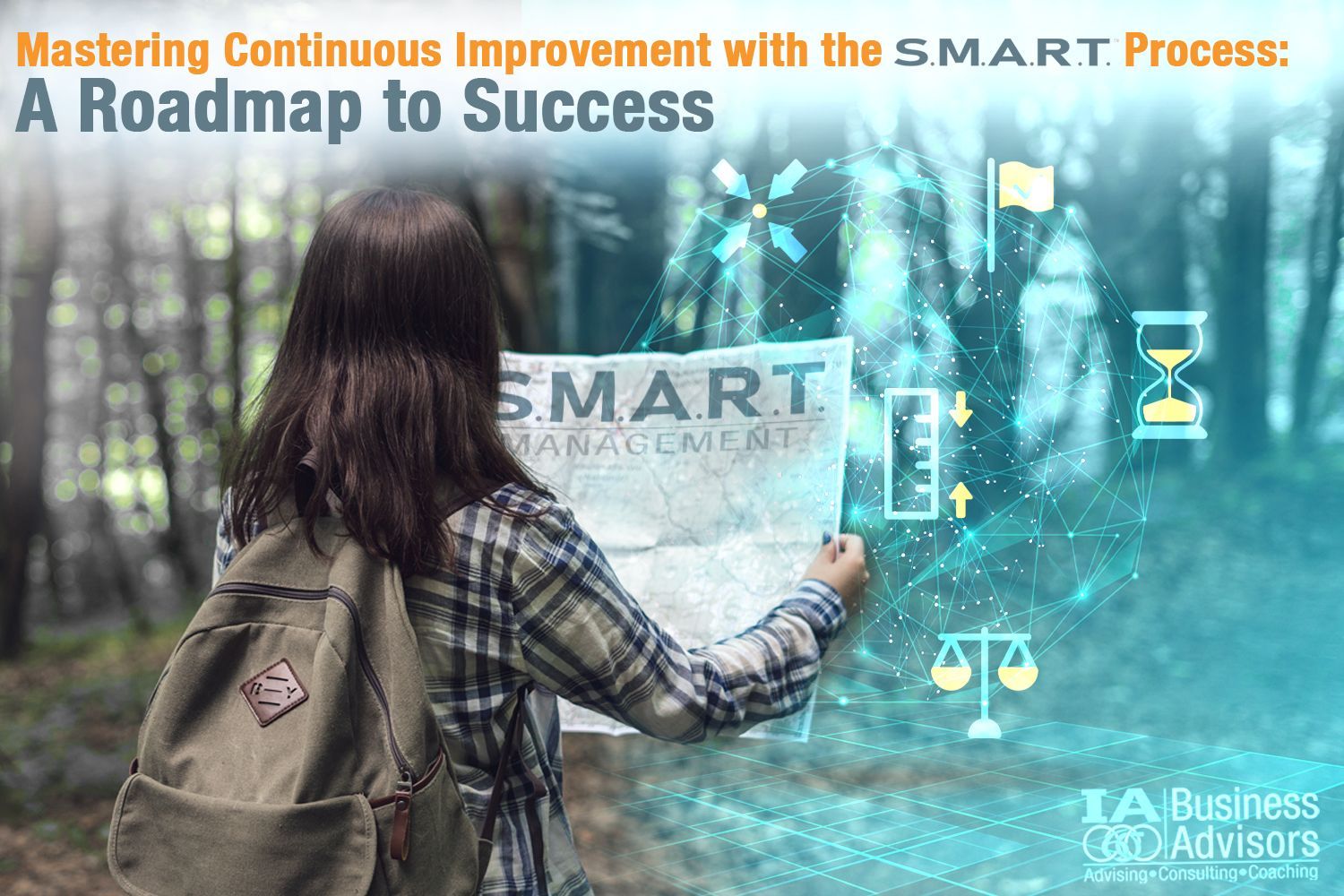Mastering Continuous Improvement with the S.M.A.R.T. Process: A Roadmap to Success

Continuous improvement consulting
In a world that’s constantly evolving, the most successful individuals and organizations are those that embrace continuous improvement. But it’s not just about making small adjustments. True continuous improvement is a structured approach to self-assessment, goal setting, and execution.
At its core, continuous improvement is the practice of continually refining processes, products, or skills to enhance performance and efficiency. Whether you're leading a team or seeking personal development, the key to success lies in setting clear, actionable S.M.A.R.T. Goals. This is where the S.M.A.R.T. process comes into play—a simple yet powerful tool that transforms improvement from a vague concept into measurable, actionable steps.
The S.M.A.R.T. Framework for Continuous Improvement
To make continuous improvement practical, you need a roadmap. The S.M.A.R.T. framework—Specific, Measurable, Achievable, Relevant, Timely—ensures that your goals are clear and attainable, while pushing you to stay focused on consistent progress.
- Specific: Broad goals like "I want to improve my business" are difficult to act upon. Instead, break down your goals into specific actions. For example, "I want to increase customer satisfaction by reducing response times."
- Measurable: Improvement should be quantifiable. If you're working on reducing response times, set a measurable target, like "Reduce average response times by 20% over the next quarter." This helps you track progress and ensures you're moving toward your goal.
- Achievable: Continuous improvement should stretch your abilities but not set you up for failure. Ensure that the goals you set are realistic given your current resources and capabilities. If your team struggles with resources, scaling response times by 50% may not be achievable—but 20% might be.
- Relevant: Improvement efforts should align with your broader objectives. Before setting a goal, ask yourself how it supports your overall vision. In this case, faster response times directly tie into improving customer experience and satisfaction—making it a relevant focus.
- Timely: Without a deadline, goals risk becoming indefinite projects that never fully materialize. Set a clear timeline for achieving your goals—e.g., “Reduce response times by 20% in the next three months”—and hold yourself accountable.
Creating a Culture of Continuous Improvement
For businesses, embedding continuous improvement into the company culture can yield incredible results. Employees become more engaged, inefficiencies are identified and addressed faster, and innovation thrives. It’s not just about solving problems—it’s about consistently asking, “How can we be better?”
On an individual level, the S.M.A.R.T. process can also be a game-changer. It pushes you to identify areas of growth, take control of your progress, and actively pursue success. Whether it’s learning new skills or refining processes at work, having clear, measurable goals allows you to make tangible improvements over time.
The Power of Reflection and Feedback
Another key to continuous improvement is building in regular periods of reflection. Are your S.M.A.R.T. Goals working? Have you achieved the milestones you set? This reflective practice enables you to adjust your approach as needed.
Similarly, feedback is an essential part of the process. Encouraging open communication with colleagues, mentors, or even customers can provide valuable insights that drive improvement. Treat feedback as a tool for growth, not criticism, and integrate it into your improvement strategy.
Conclusion: Start Your Continuous Improvement Journey Today
The path to success is paved with consistent effort and strategic thinking. By adopting the S.M.A.R.T. approach to continuous improvement, you can transform the way you work and lead, ensuring that progress is not only possible but measurable and sustainable.
Now, ask yourself: What’s one S.M.A.R.T. improvement you can start working on today? Take the first step on your continuous improvement journey, and watch how incremental changes lead to extraordinary results.












